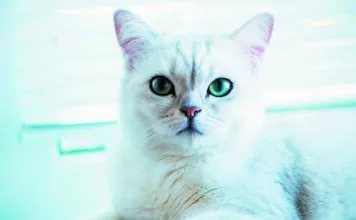Cats and Home Remodeling Projects
Dear Doctor – Catnip experts discuss odd chewing habits
[From Tufts Febuary 2010 Issue]
I have had my two cats since they were just a few days old. They were bottle-fed until they could eat regular food. They are now 1.5 years old. One is obsessed with rubber bands and the other chews any shoe that has a soft sole. Both chew cardboard boxes.
To try to break this habit, my veterinarian suggested giving them dog chew bones and crunchy food. Neither worked. They still chew on inappropriate objects. Do you think this behavior is because they were not properly weaned? Any advice?
Linda Carlen
Inherited Siamese acts demanding
[From Tufts June 2011 Issue]
Inherited Siamese acts demanding
Three years ago, I inherited a then-10-year-old male seal point Siamese. When my sisters husband died, she felt that she could no longer care for the cat due to the fact that he was very close to the cat and she never really cared for him. The cat is an indoor and outdoor cat, and he still has his claws.
When he moved in with me and my mom, he began clawing furniture in the living room, which is something he did not do with my sister and her husband. He also began jumping on the kitchen counter and sniffing around. If food is there, hell knock it on the floor and then jump down and eat it.
Dr. Dodmans Casebook – Petting Induced Aggression
[From Tufts August 2011 Issue]
Editors note: Nicholas Dodman, BVMS, director of the Animal Behavior Clinic at Cummings School of Veterinary Medicine at Tufts University, is a renowned animal behaviorist and best-selling author.
Many years ago, in the days when I sometimes agreed for logistical reasons to do telephone consultations with distraught pet owners, I found myself talking to a very pleasant-sounding older woman on Cape Cod about her aggressive cat. The cat in question was a 7-year-old cat, the breed of which escapes me now, though the sad tale does not.
Searching for Clues
[From Tufts February 2011 Issue]
Recently, Murphy, my 12- year-old cat, was suddenly looking more like a molting bird than a domestic shorthair. In the span of 10 days, she had methodically and persistently licked and pulled fur off her front paws, abdomen and right flank. Her barbed tongue had removed hair down to the skin in some places, causing red rashes.
Yet, she continued to purr and engage in play, eat and sleep as she normally does. The only deviation from her routine had been this overzealous grooming that left me puzzled, frustrated and concerned.
Myth Buster: Cats and Water
[From Tufts March 2011 Issue]
Editors note: This article launches a new Catnip series that debunks common misconceptions about cats.
In spite of their reputation for tolerating only dry land, a surprising number of domesticated cats not only tolerate but love pawing water or swimming. Some like to play in standing water; others are fascinated by running water and prefer to drink from a faucet rather than a bowl.
Ask The Doctor – How to Choose an E-collar for Cats
When choosing an E-collar
Q I have been a veterinary technician for the past six months, and Im hoping you can give me some good advice that I can pass on to our clients. I am often asked by cat owners about the best E-collar to use after surgery. There are more on the market today than ever before, but I dont want to give them the wrong advice.
Making Serious Decisions
Living in Harmony
All right, I will admit that my view on counter jumping may be all wrong - but frankly, I dont like when my cats do it. In this months issue of Catnip, Tufts Dr. Nick Dodman discusses at length why the behavior is natural and normal - and one that probably should be accepted by cat owners (and certainly not punished).











